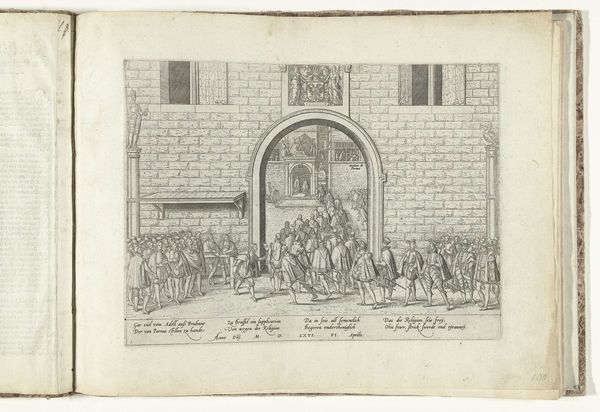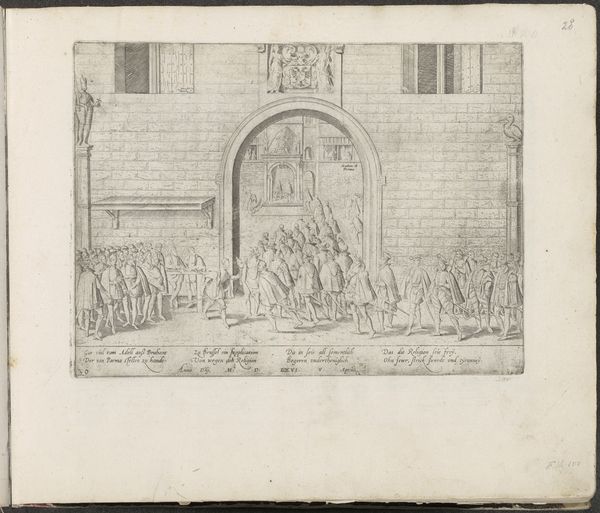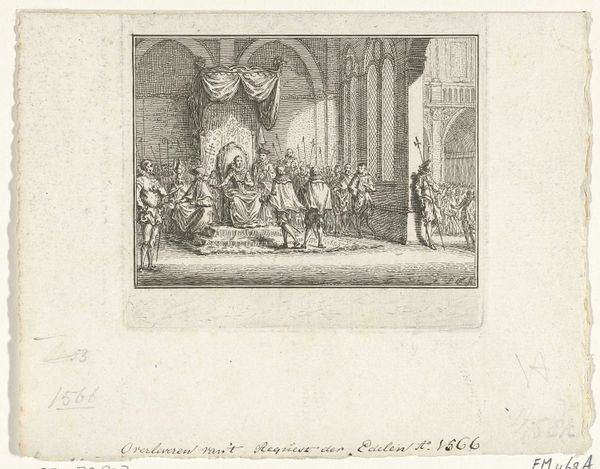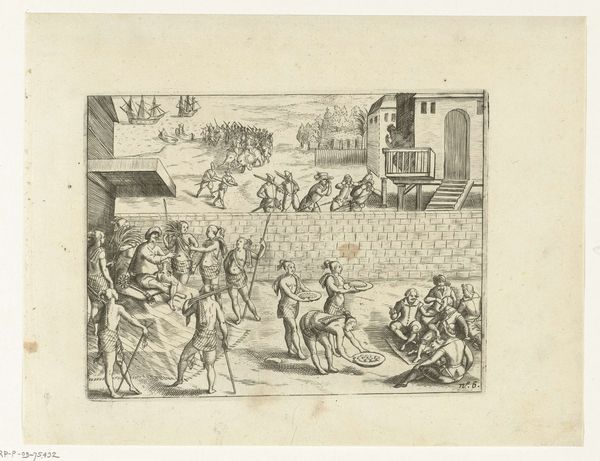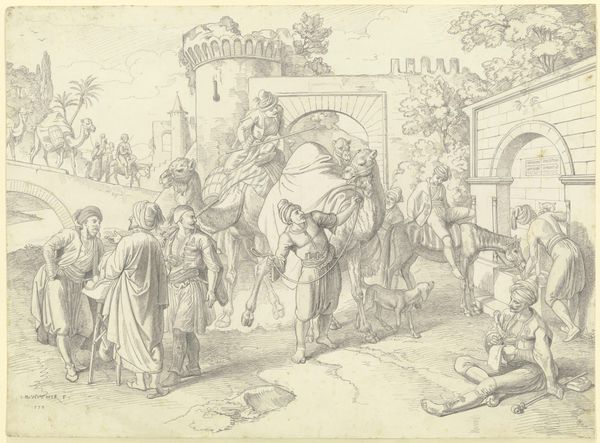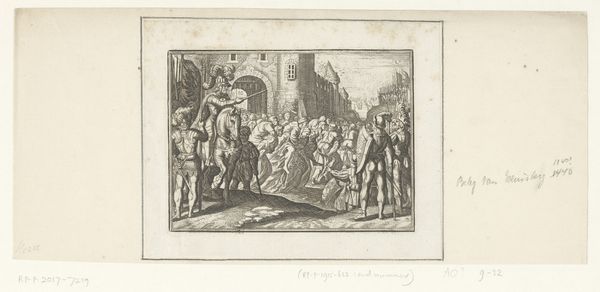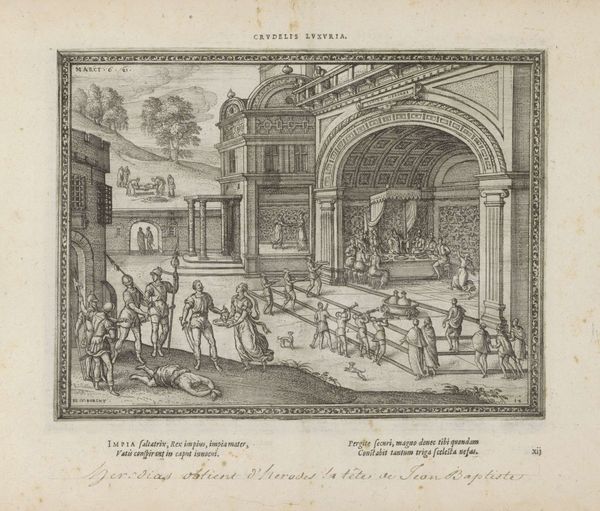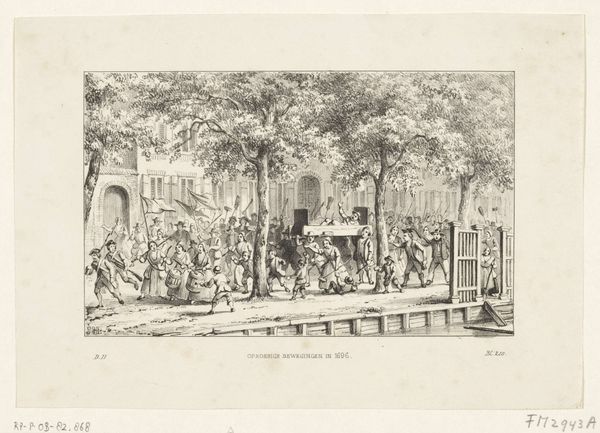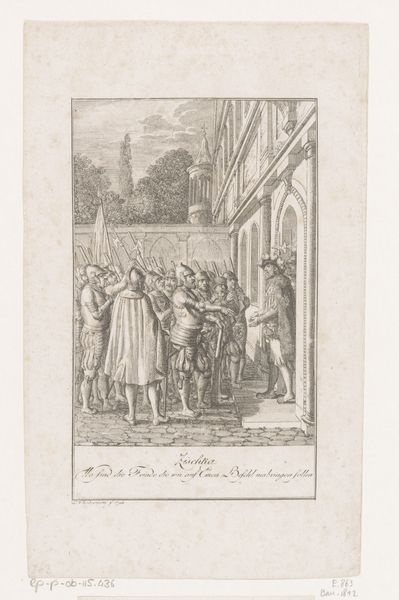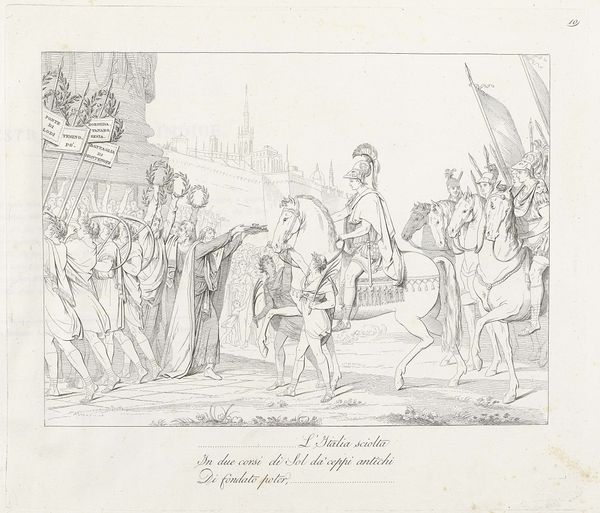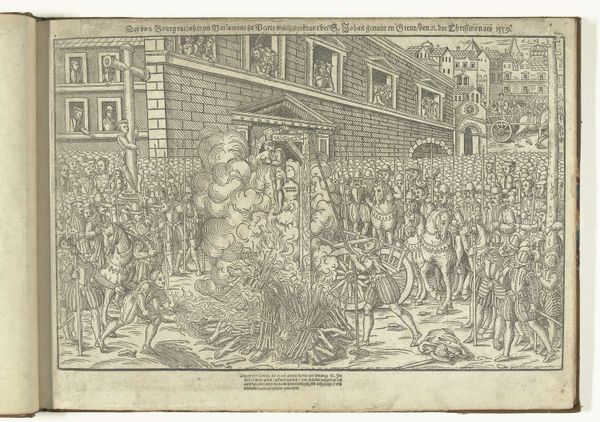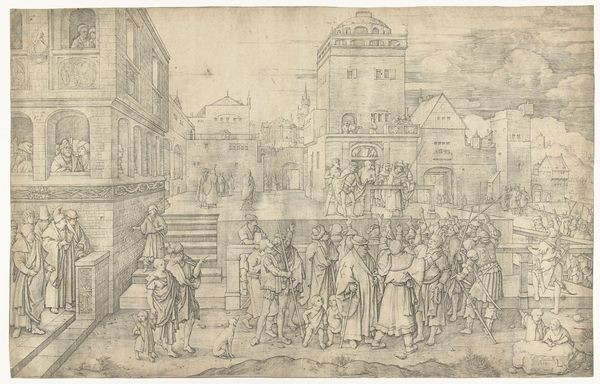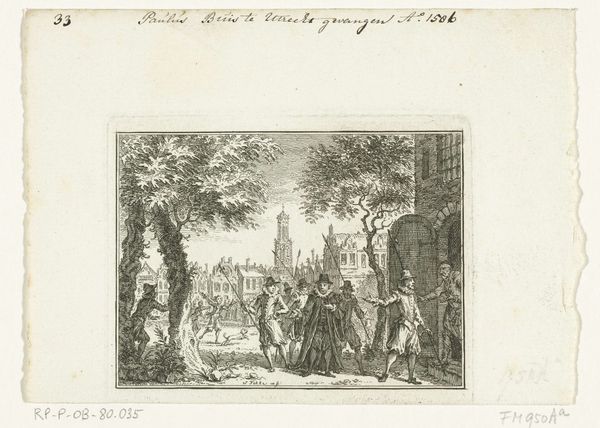
drawing, print, engraving
#
drawing
# print
#
landscape
#
11_renaissance
#
flemish
#
cityscape
#
history-painting
#
engraving
Dimensions: height 210 mm, width 280 mm
Copyright: Rijks Museum: Open Domain
Editor: This is "Aanbieding van het Smeekschrift van de edelen, 1566," created between 1566 and 1570 by Frans Hogenberg. It's a print, an engraving to be precise, and quite detailed. What strikes me most is the sheer number of figures depicted. What do you make of this print? Curator: As a materialist, I find it crucial to look beyond the representational aspect and consider the social context and the very act of creation. This print, mass-produced through engraving, disseminated a specific political message. The act of replicating this image for a wider audience, making it accessible, speaks volumes about the intent of spreading information and possibly inciting action related to this historical petition. Editor: So the material itself – the engraving – becomes a tool for social change? Curator: Precisely. How was it made? How many were made? Who had access? Consider the labor involved in creating the copperplate, the accessibility of prints compared to unique paintings for communicating the news during a period of political upheaval. It democratized information in a way that paintings for wealthy patrons could not. Editor: That makes me consider the role of the publisher or printer as key actors. Is this print propaganda then? Curator: The term ‘propaganda’ has modern connotations. But, to look at it critically, we can look at the distribution methods. This print uses linear perspective, it provides clear details about the presentation of the Petition, framing it in a way accessible to many people beyond the city of Brussels, to garner support for a political agenda. And given its survival and presence in the Rijksmuseum collection, we should ask what value we continue to place on such an object. Editor: I hadn’t thought of it that way, focusing on its creation and distribution as part of the message itself. Thanks, I’ll never look at a historical print the same way again.
Comments
No comments
Be the first to comment and join the conversation on the ultimate creative platform.
